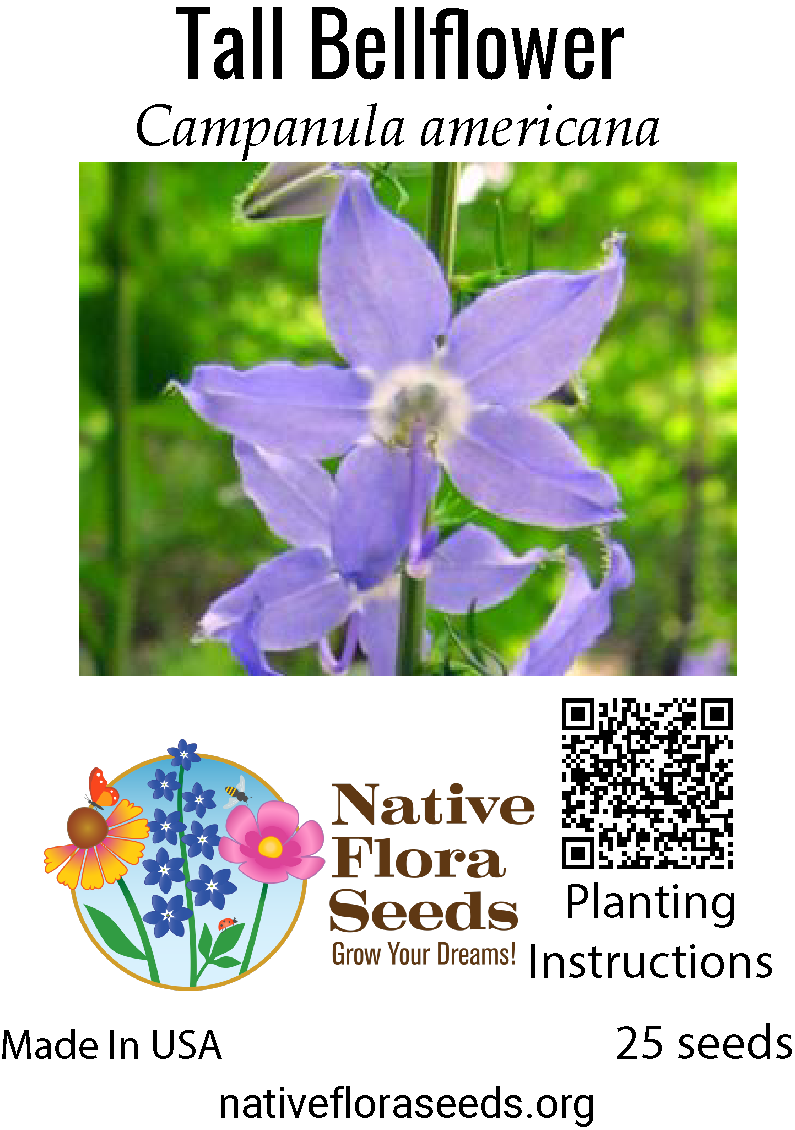Planting Instructions for Campanula americana (American Bellflower)
Here's a guide to planting Campanula americana, also known as American Bellflower or Tall Bellflower, in the USA:
Site Selection
Sunlight: Campanula americana prefers partial shade, especially in hotter climates. It can tolerate some sun, but it does best with dappled shade or morning sun and afternoon shade. In cooler climates, it can handle more sun.
Soil: It thrives in rich, moist, well-drained soil. It can tolerate a variety of soil types, but it's important that the soil doesn't become waterlogged.
Planting Outdoors
Fall Planting:
Fall is a good time to plant Campanula americana seeds.
Sow seeds in late fall (September-November) before the first hard freeze.
Prepare the soil by clearing any weeds or debris and lightly loosening the top layer.
Scatter seeds on the surface of the soil. They need light to germinate, so avoid burying them too deeply. A very light covering of soil or even just pressing them into the surface is sufficient.
Water gently but thoroughly. Keep the soil consistently moist until germination.
Spring Planting:
Sow seeds after the last spring frost.
Germination rates may be lower with spring planting compared to fall planting, so stratification (explained below) is recommended.
Follow the same planting steps as for fall planting.
Starting Seeds Indoors
Timing: Start seeds 6-8 weeks before the last expected frost in your area.
Containers: Use seed starting trays or small pots with drainage holes.
Soil: Use a seed starting mix or a well-draining potting mix.
Planting: Sow seeds very shallowly, barely covering them with soil. They need light to germinate.
Watering: Keep the soil consistently moist but not waterlogged. Use a spray bottle or gentle watering can to avoid disturbing the seeds.
Light: Provide ample light. A sunny window may not be enough, especially in early spring. Grow lights are highly recommended for starting Campanula americana indoors.
Transplanting: Transplant seedlings outdoors after the last frost and when they have developed a few sets of true leaves. Harden them off gradually before transplanting. Space plants about 1-2 feet apart.
Stratification and Scarification
Stratification: Campanula americana seeds benefit from stratification (cold treatment). This helps break dormancy and improve germination rates, especially for spring planting. Place seeds in a sealed plastic bag with a slightly damp paper towel or vermiculite. Store the bag in the refrigerator for 4-6 weeks before planting.
Scarification: Scarification (lightly scratching or nicking the seed coat) is not necessary for this species.
Watering
Keep the soil consistently moist during germination and early growth.
Once established, Campanula americana prefers consistently moist soil, but it shouldn't be soggy. Water deeply but less frequently, allowing the top inch or two of soil to dry out slightly between waterings.
Maintenance
Campanula americana requires minimal maintenance.
Deadheading spent flowers can encourage more blooms.
It may self-seed readily in ideal conditions.
Invasiveness
Campanula americana is not generally considered invasive, but it can spread through self-seeding. If you want to control its spread, you can remove seed pods before they mature.
Additional Tips
Campanula americana is a beautiful addition to woodland gardens, cottage gardens, and naturalized areas.
It attracts pollinators such as bees and butterflies.
The tall flower stalks make it a good choice for cut flowers.
Be patient with Campanula americana seeds. Germination can be erratic, and it may take several weeks for seedlings to appear.



